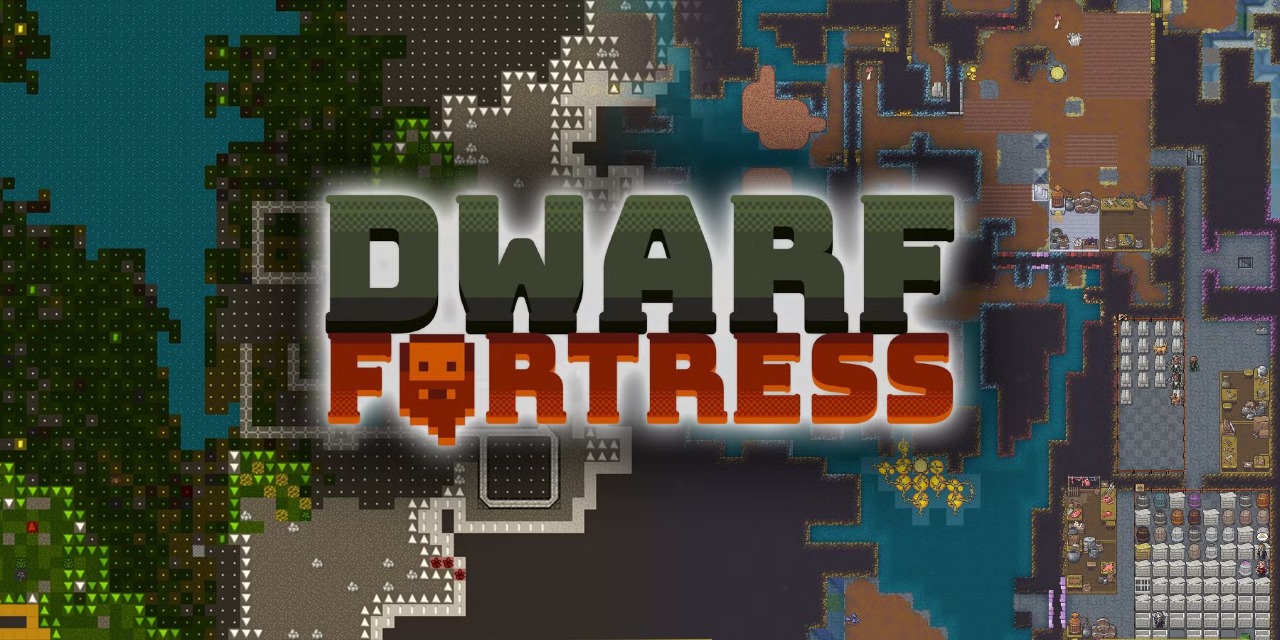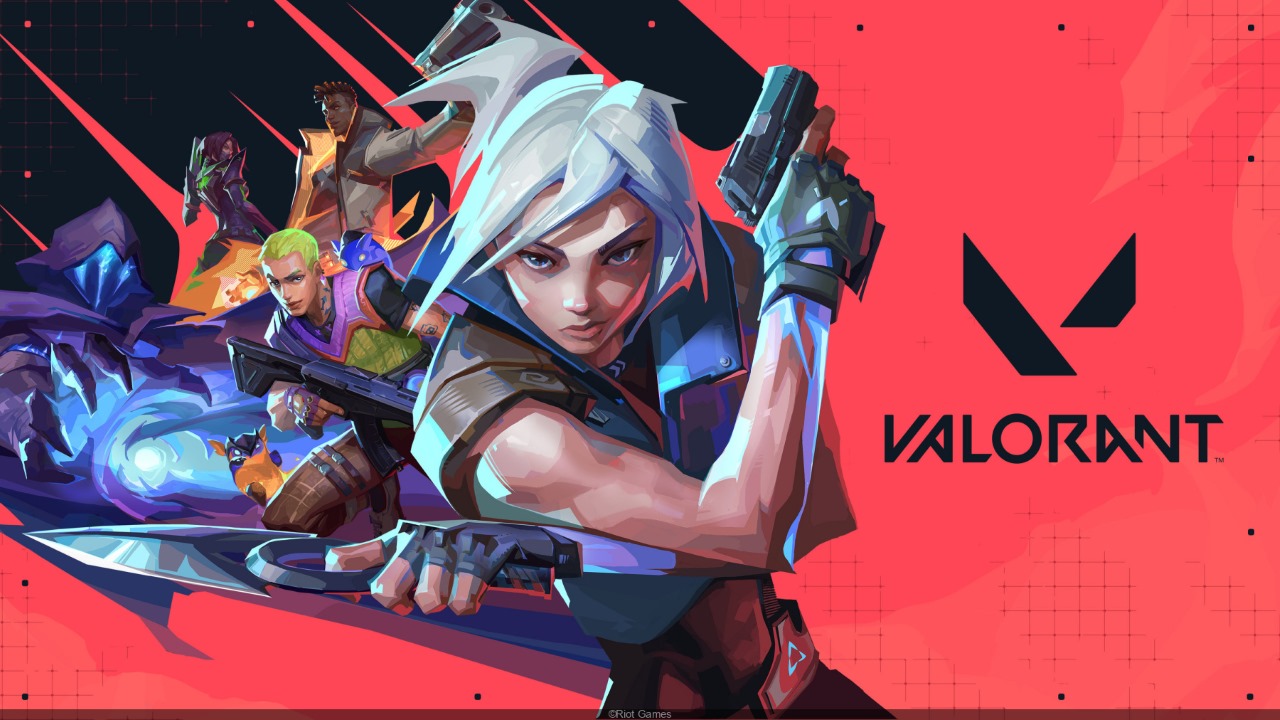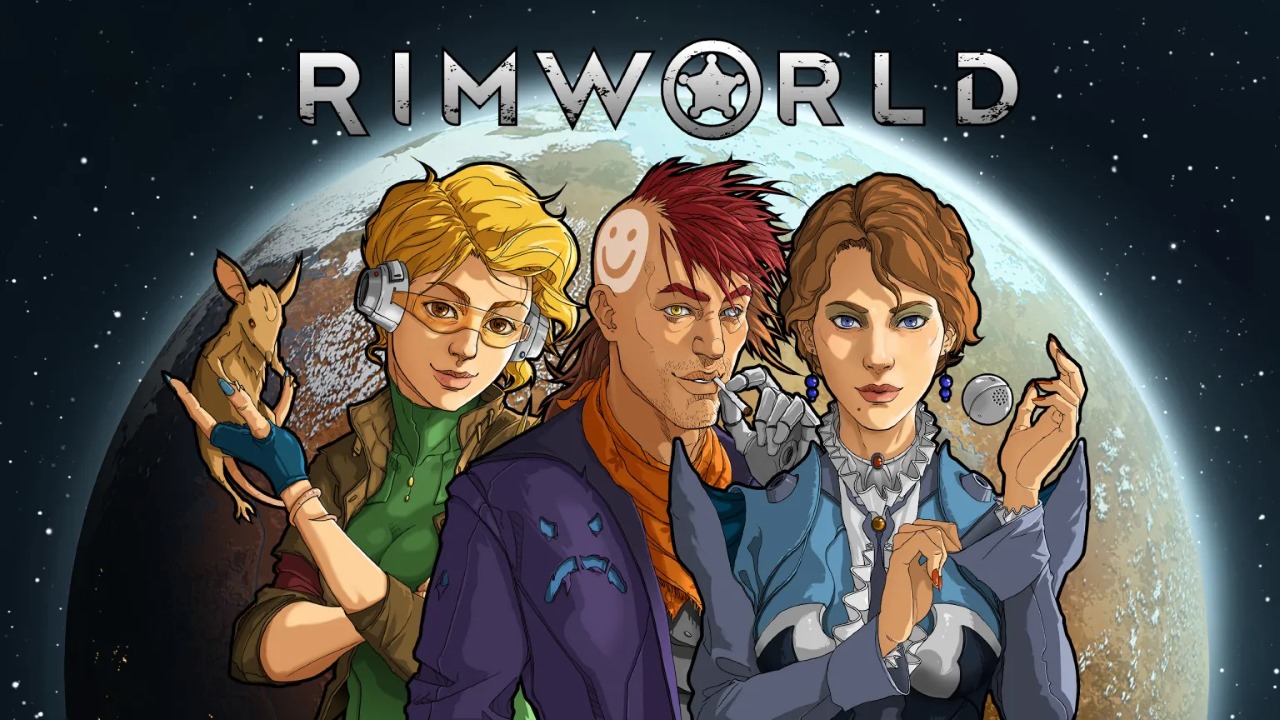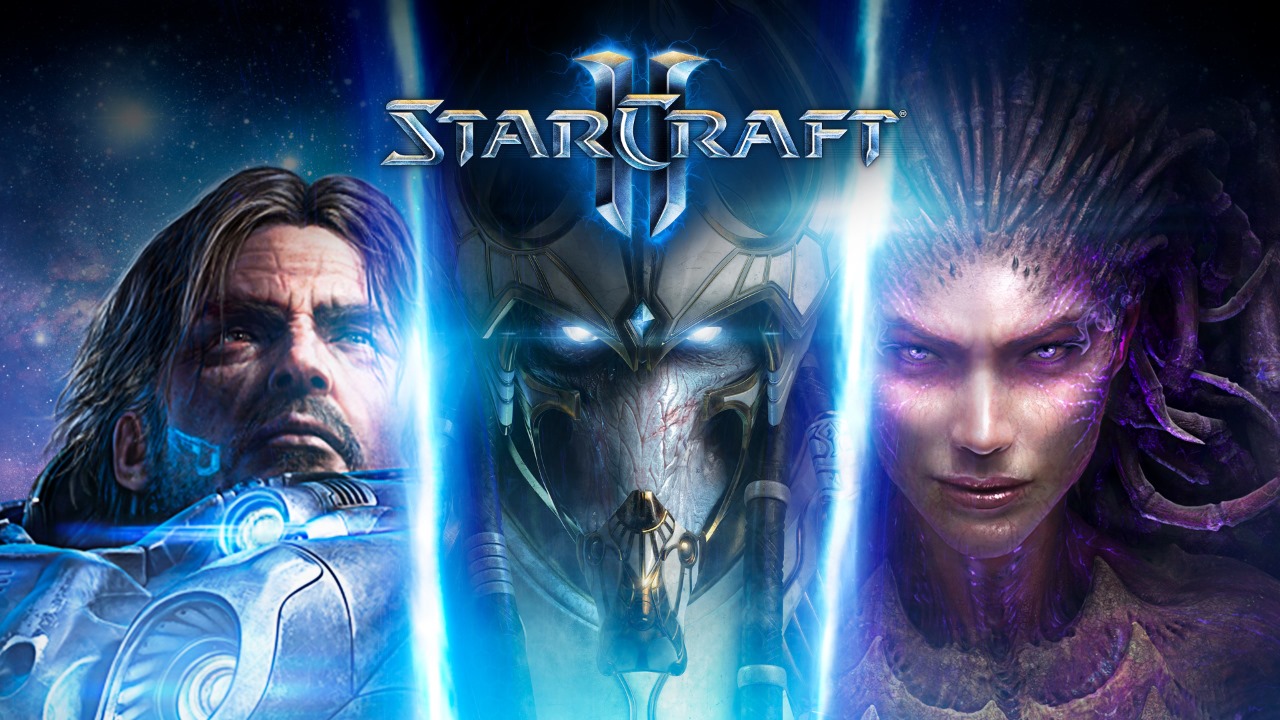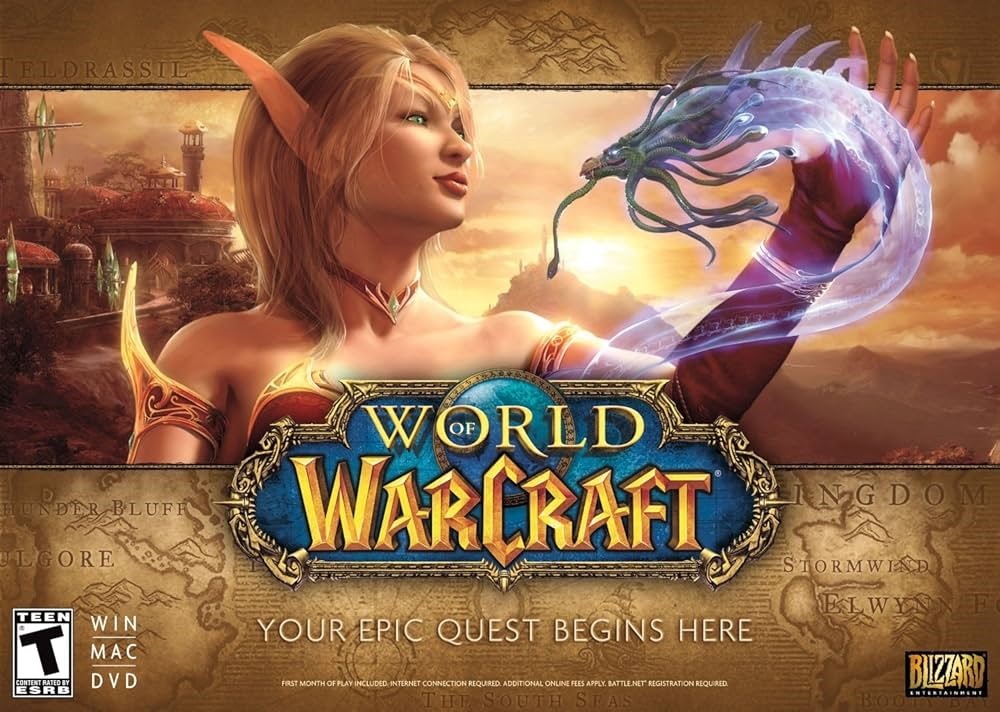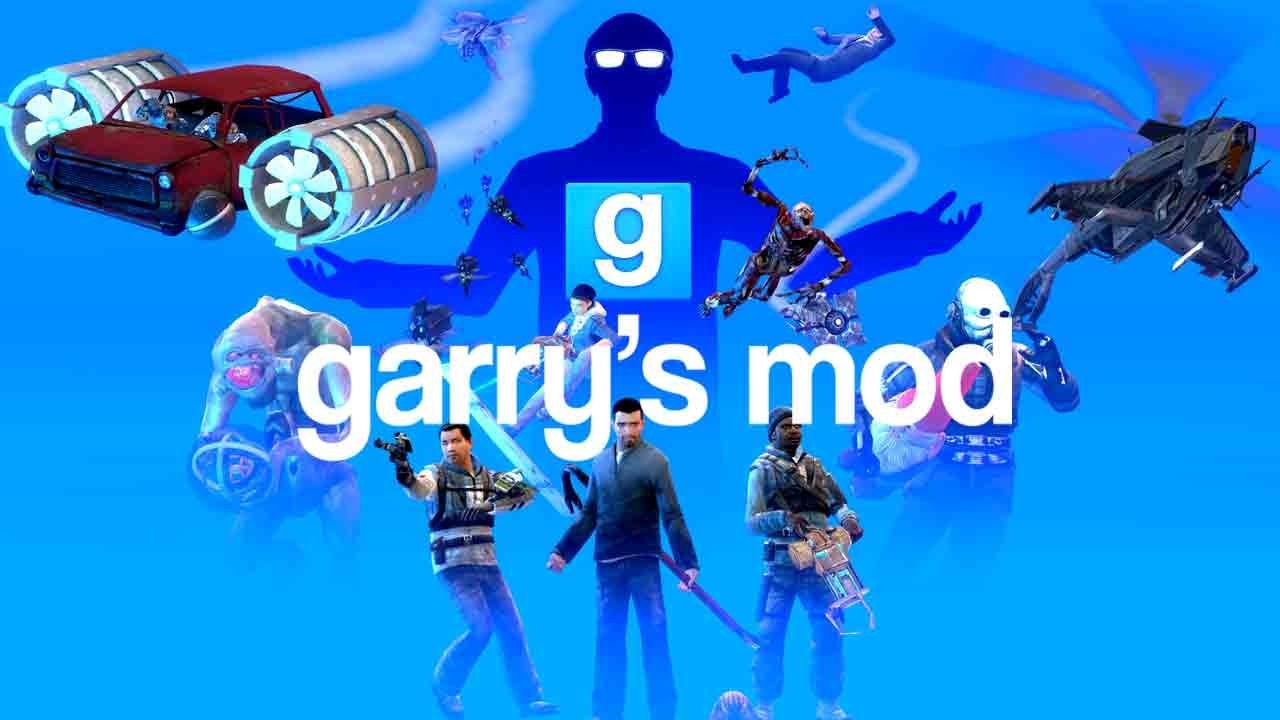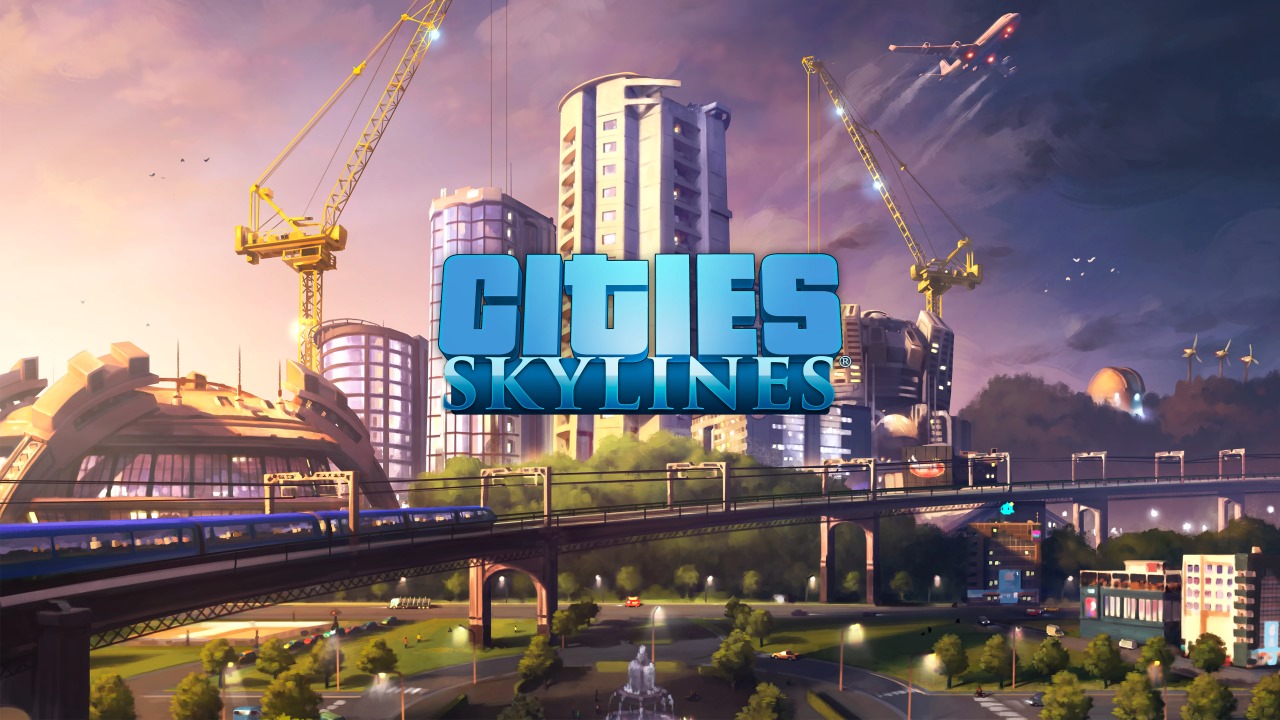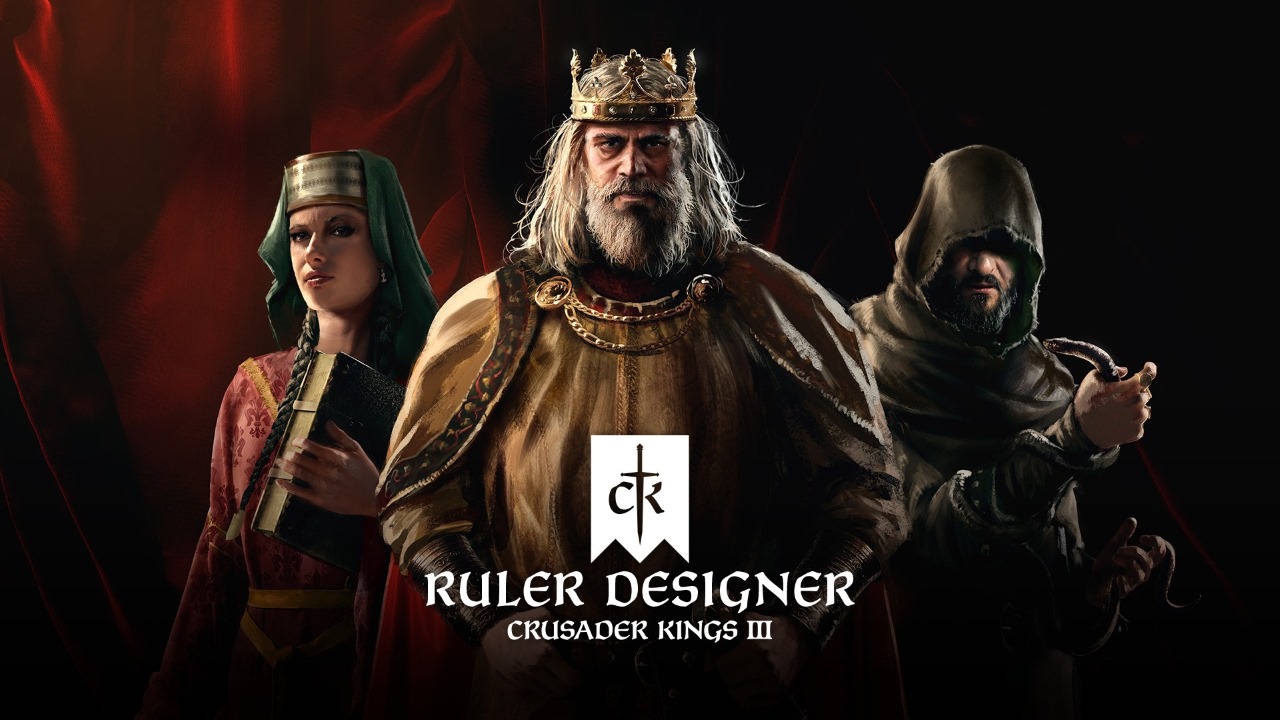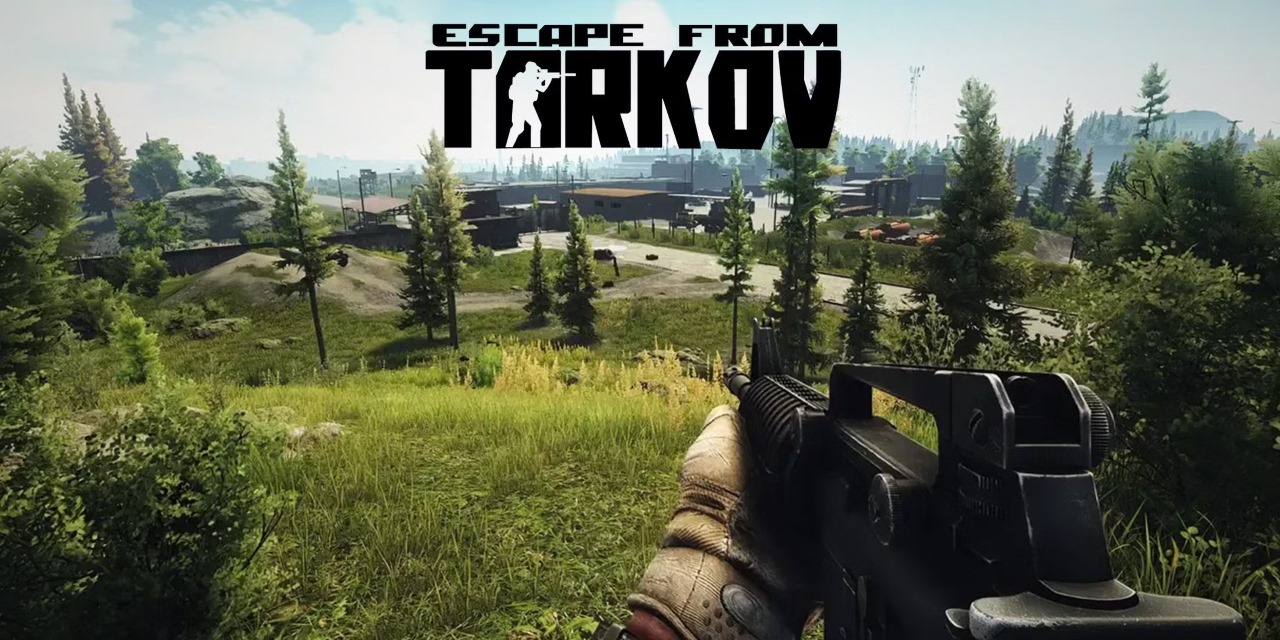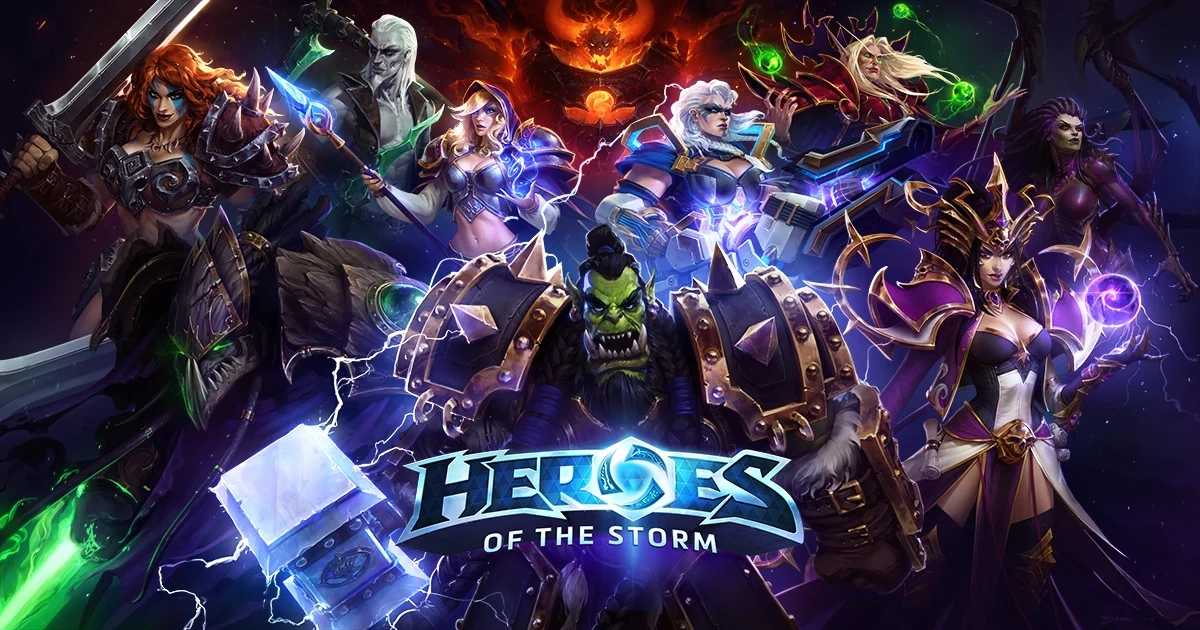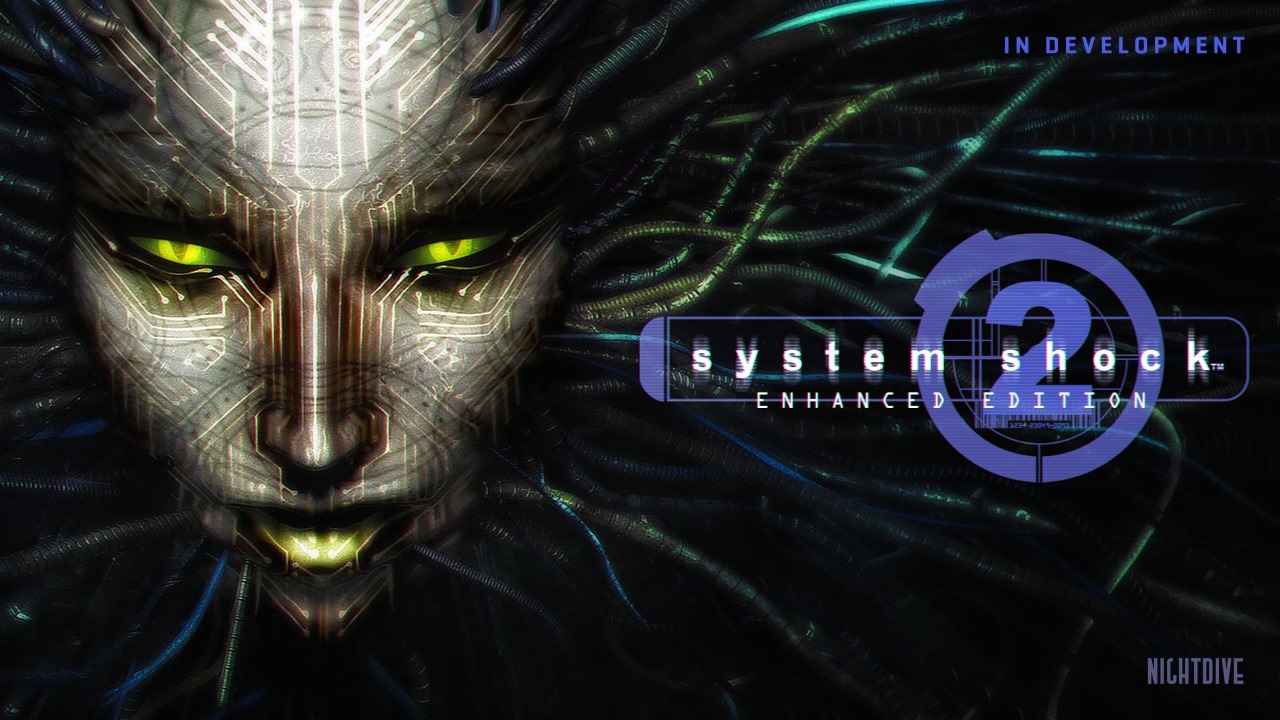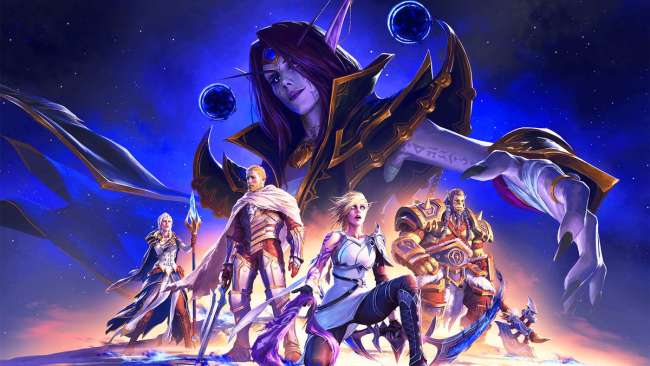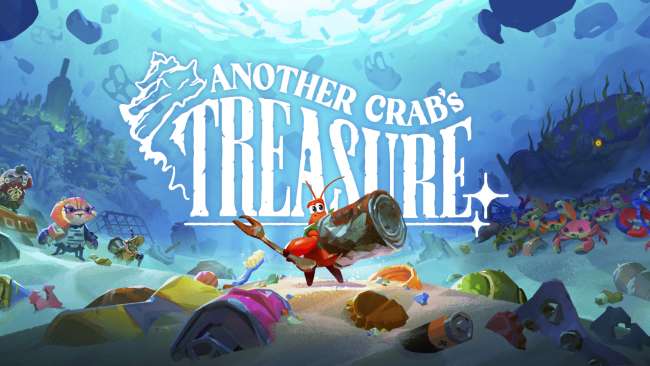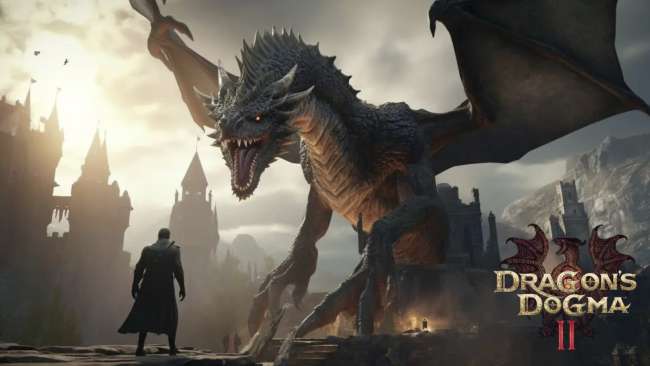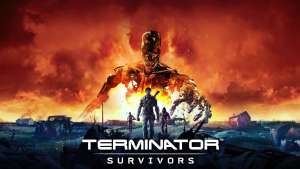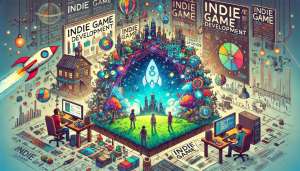PC gaming has always lived in a world apart. Unlike consoles, which are designed with fixed architecture and curated experiences, the PC has thrived on freedom—freedom of hardware, of controls, of modding, of creation. It’s a space where niche games can survive and where genre-defining titles are born without compromise. But in the sea of multiplatform releases and console ports, some games never leave. Some are built specifically for PC and never step outside its borders.
This article focuses entirely on those titles—the permanently exclusive PC games that have never been released on console or handheld platforms. These are not timed exclusives. They haven’t been ported, remastered, or re-released. They are true PC experiences that highlight the platform’s unparalleled depth, complexity, and creativity.
Let’s dig into 27 of them—each carefully selected and confirmed for its exclusivity, and each showcasing what makes the PC ecosystem truly one of a kind.
Half-Life: Alyx
Game Details:
-
Genre: VR First-Person Shooter
-
Release Year: 2020
-
Developer: Valve
-
Player Modes: Single-player
When Half-Life: Alyx was announced, expectations were impossibly high. Valve had been silent on the franchise for years, and fans had nearly given up on seeing another entry. But rather than a standard shooter, Valve returned with a fully VR-exclusive title, built from the ground up for room-scale immersion. It wasn’t just a tech demo—it was a full-length, canon story set between Half-Life 1 and 2, featuring detailed physics, rich storytelling, and a level of interactivity that only VR on PC could offer.
Everything from reloading your pistol to solving puzzles with a multi-tool required real movement and spatial awareness. The gravity gloves reinvented the iconic gravity gun in a way that felt natural in VR, and the environments were loaded with physics-based detail that invited experimentation.
Unlike other franchises that watered themselves down for wider audiences, Alyx doubled down on PC’s potential. Even years later, it has never been ported to PlayStation VR or any console platform. Its reliance on open PC architecture, modding support, and SteamVR integration cements it as one of the most significant PC-exclusive releases in the last decade.
Dwarf Fortress
Game Details:
-
Genre: Colony Sim / Management / Roguelike
-
Release Year: 2006 (original), 2022 (Steam version)
-
Developer: Tarn and Zach Adams (Bay 12 Games)
-
Player Modes: Single-player
There’s no game quite like Dwarf Fortress. On the surface, it’s a colony management sim rendered in ASCII art, but under the hood, it’s one of the most detailed and complex simulations ever made. Every dwarf in your fortress has individual needs, histories, relationships, and personalities. The game simulates geology, weather, fluid dynamics, creature behavior, and even myths and legends.
You don't play Dwarf Fortress as much as you unleash it. You designate areas to dig and watch as your dwarves get drunk, fight, mourn their dead, and build absurdly complex machinery. Catastrophes are inevitable—be it a forgotten beast from the deep, a berserk carpenter, or a badly placed lever that floods your fortress with magma.
Its infamous motto, “Losing is fun,” captures the spirit of experimentation and failure that defines the experience. There’s no winning screen, just stories—of civilizations built and lost, of dwarves turned poets, of vampire mayors who cancel mandates to feed on their subjects.
Originally free, the Steam version introduced a visual tileset and music while retaining everything that made the original a cult classic. Yet even with this glow-up, it remains exclusive to PC. Its controls, complexity, and modding culture simply don’t fit in a console environment.
Valorant
Game Details:
-
Genre: Tactical FPS / Competitive Shooter
-
Release Year: 2020
-
Developer: Riot Games
-
Player Modes: Online Multiplayer
Valorant was Riot Games’ deliberate step into the tactical shooter genre, and it didn’t tiptoe. With tight, precise gunplay reminiscent of Counter-Strike and a cast of agents equipped with unique abilities like in Overwatch, Valorant fused two successful formulas into something fast, aggressive, and highly competitive.
Its shooting mechanics rely heavily on pixel-perfect accuracy and recoil control. There’s no auto-aim, no aim assist, no forgiveness for sloppy play—everything is raw input and player reaction. That’s a big reason why the game remains firmly rooted in PC. Riot has made no move toward console ports, and doing so would radically shift the meta and control balance.
But what really sets Valorant apart is its esports infrastructure and consistent updates. New agents, seasonal content, global tournaments, and ranked ladders keep the ecosystem alive. Its anti-cheat system, Vanguard, runs at the kernel level—another layer of technical integration that only works on PC.
With millions of players, growing international leagues, and an active creator community, Valorant has become one of the modern faces of PC-exclusive gaming—where precision, community, and control truly matter.
RimWorld
Game Details:
-
Genre: Colony Sim / Story Generator
-
Release Year: 2018 (1.0 release)
-
Developer: Ludeon Studios
-
Player Modes: Single-player
RimWorld isn’t a game—it’s a story generator disguised as a survival sim. You’re given three colonists stranded on a distant planet and asked to keep them alive. That sounds simple until one has a mental breakdown and kills a pet, another becomes addicted to drugs, and the third builds a sculpture depicting the colony’s founder vomiting in despair. And that’s just day 20.
Every character has traits, backstories, and moods. The game runs on a custom storyteller system, where difficulty spikes and random events are tuned based on your chosen AI. Want a calm, smooth ride? Choose Phoebe Chillax. Want unpredictable chaos? Randy Random delivers in spades.
Combat is deep, base building is endlessly customizable, and mods push the game to absurd levels—from medieval scenarios to sci-fi overhauls and cannibal cults. And it’s PC-only for a reason: the sheer scope of its modding, scripting, and interface would never survive the limits of a console or controller.
Its beauty isn’t in polished visuals or sound—it’s in how every session becomes a uniquely tragicomic narrative. And that kind of emergent, sandbox-driven experience is something PC gaming excels at more than any other platform.
League of Legends
Game Details:
-
Genre: MOBA / Competitive Multiplayer
-
Release Year: 2009
-
Developer: Riot Games
-
Player Modes: Online Multiplayer
Few games have shaped modern PC gaming culture like League of Legends. Born as a spiritual successor to Defense of the Ancients, it refined the MOBA genre into a streamlined, polished, and endlessly competitive format. Five players per team, three lanes, jungle control, and a rotating cast of over 160 champions with unique kits—it’s a game of mechanics, mind games, and metagame shifts.
Its structure has been largely unchanged for over a decade, but the ecosystem surrounding it continues to grow. With one of the largest esports scenes in the world, League is more than a game—it’s a sport, with world championships, team franchises, and a massive viewership. It's woven into the identity of modern PC gaming.
Despite its popularity, League of Legends has never appeared on console. It wasn’t designed for controllers. The mouse-clicking precision, fast reflexes, and rapid ability input would be compromised. Even the interface and team communication rely on PC-centric setups like pinging, chat, and quick-cast macros.
It’s free-to-play, but built to be mastered—not just played. League rewards grind, strategy, and reading the battlefield better than your opponent. It’s a perfect example of what happens when a PC game is designed entirely around the strengths of the platform—uncompromising, competitive, and unreplicable anywhere else.
StarCraft II
Game Details:
-
Genre: Real-Time Strategy
-
Release Year: 2010
-
Developer: Blizzard Entertainment
-
Player Modes: Single-player, Online Multiplayer
StarCraft II was the follow-up to the most legendary RTS of all time, and somehow, it didn’t disappoint. Built as a trilogy—Wings of Liberty, Heart of the Swarm, and Legacy of the Void—it delivered sharp writing, beautifully animated cutscenes, and refined strategy gameplay.
You command one of three factions—Terran, Zerg, or Protoss—each with wildly different mechanics. Resource management, build orders, micro and macro skills, and unit compositions make every match a layered chessboard. At the peak of its esports popularity, StarCraft II was synonymous with South Korea’s gaming culture and held global prestige in the competitive scene.
But StarCraft II is also a single-player marvel. Each campaign added new missions, mechanics, and narrative stakes, culminating in one of the best sci-fi stories in gaming.
Despite the RTS genre fading in mainstream popularity, SC2 has stayed firmly on PC. It’s a keyboard-heavy, APM-driven game that relies on interface speed and precision that’s just not possible with controllers. Blizzard never released a console version—and it remains a monument to PC gaming’s golden age of strategy.
World of Warcraft
Game Details:
-
Genre: MMORPG
-
Release Year: 2004
-
Developer: Blizzard Entertainment
-
Player Modes: Online Multiplayer
World of Warcraft didn’t invent MMOs—but it did perfect them for a generation. From its launch in 2004, WoW offered a vast, beautifully built world filled with quests, dungeons, social interactions, raids, and thousands of players running through it all at once. The continents of Azeroth and beyond became homes for millions.
Each expansion added new races, classes, zones, and mechanics. From The Burning Crusade to Shadowlands, it evolved over the decades, reshaping the genre multiple times. The recent return of WoW Classic proved how nostalgic and powerful that original experience still is.
And through all of it, World of Warcraft has stayed exclusive to PC. No console version has ever been released—not because Blizzard didn’t want to, but because the complexity of the UI, the constant use of dozens of hotkeys, and the need for fast coordination between players would be a nightmare to translate to a controller.
MMOs like this thrive in the flexibility and customization that PC offers: add-ons, macros, performance tweaks, and deep community forums. WoW is not just a game—it’s a living ecosystem. One that could only grow in the open soil of PC gaming.
Garry’s Mod
Game Details:
-
Genre: Sandbox / Modding Platform
-
Release Year: 2006
-
Developer: Facepunch Studios
-
Player Modes: Single-player, Online Multiplayer
There’s no real “goal” in Garry’s Mod. It’s not a game in the traditional sense—it’s a physics sandbox built on Valve’s Source engine, where players can spawn objects, ragdolls, characters, and vehicles and manipulate them however they want. Want to build a car with rocket launchers? Go for it. Want to make a machinima movie? Set up your actors and cameras.
But what really made GMod legendary was its community-created game modes. Trouble in Terrorist Town, Murder, Prop Hunt, and DarkRP are just a few of the many experiences born inside this platform. Players turned it into a creative playground, a comedy engine, and even a serious roleplaying space.
With deep modding support, Lua scripting, and a Steam Workshop overflowing with assets, Garry’s Mod has always belonged to PC. It’s built for tinkerers, coders, and creatives who think controllers are handcuffs. Bringing this to consoles would be like bottling a thunderstorm.
Even after all these years, Garry’s Mod remains active, relevant, and weird in the best possible way—and its spiritual successor, S&box, is being built for the same PC-first future.
ARMA 3
Game Details:
-
Genre: Military Simulation / Tactical Shooter
-
Release Year: 2013
-
Developer: Bohemia Interactive
-
Player Modes: Single-player, Online Multiplayer
ARMA 3 isn’t just a game—it’s a combat simulation. Designed with realism in mind, it throws away the bullet-sponge gunplay of traditional shooters and replaces it with tactics, squad coordination, ballistics, wind mechanics, and large-scale warfare. With its vast open-world maps—like the 270 km² island of Altis—ARMA 3 allows for full military campaigns, sandbox missions, and mod-driven experiences that blur the line between game and training software.
What truly makes ARMA 3 special is the editor. Entire operations can be built and scripted with insane depth—from hostage rescues to armored warfare to political roleplay. And the modding community? It gave birth to DayZ, King of the Hill, and countless custom game modes. Players have built entire persistent war scenarios with logistics, air support, and frontlines that span real-time days.
Its control scheme is too complex for a gamepad. Navigating the UI, managing gear, commanding AI, and using communications tools would never fit within the limitations of console hardware. That’s why ARMA 3 remains PC-only, and why Bohemia Interactive’s future titles continue to put PC at the center.
This isn’t fast-food gaming—it’s tactical immersion at a scale that only PC architecture can support.
Cities: Skylines
Game Details:
-
Genre: City Builder / Simulation
-
Release Year: 2015
-
Developer: Colossal Order
-
Player Modes: Single-player
While console versions technically exist for Cities: Skylines, the true version—the one that’s fully moddable, expandable, and supported by the deepest community tools—lives only on PC. This is the version that allows you to build sprawling megacities with functional traffic systems, custom landmarks, and real-world road grids, all while managing budgets, utilities, taxes, and citizen happiness.
Mods turn the game into something unrecognizable. You want a Tokyo-style subway system? A simulation of 1990s New York? Realistic vehicle behavior? You can add it all. This open-ended structure and access to workshop content make the PC version the only one considered “complete” by simulation fans.
Building and navigating complex UI elements, installing mods, and running large-scale cities without performance dips simply isn’t feasible on current console architecture. The game thrives on mouse-and-keyboard input and requires serious CPU power to run smoothly when scaled.
More than just a SimCity successor, Cities: Skylines became the definitive modern city-building game—one that could only truly exist, evolve, and thrive on PC.
Crusader Kings III
Game Details:
-
Genre: Grand Strategy / Dynasty Simulation
-
Release Year: 2020
-
Developer: Paradox Interactive
-
Player Modes: Single-player, Online Multiplayer
The follow-up to Crusader Kings II, this entry streamlines many of the complicated systems while preserving the soul of its predecessor. You’re not just managing a country—you’re managing people. Spouses. Heirs. Bastards. Plots. Vassals with grudges. Every character has ambitions, vices, and secrets, and your job is to survive across centuries of shifting borders, dynastic politics, and medieval chaos.
Want to assassinate your brother and marry your aunt to form an alliance with a far-off sultanate? Totally fine. Want to become a cannibal pope? Possible. Want to turn Iceland into a matriarchal kingdom of nudist zealots? Doable and done.
No game better exemplifies the concept of emergent storytelling quite like Crusader Kings III. Every campaign is a tapestry of drama, comedy, tragedy, and betrayal.
It’s PC-only for good reason. The interface is layered, with dozens of menus and information windows. Modding is a key pillar, and custom scenarios, characters, and even fantasy conversions (like Game of Thrones or Elder Kings) expand the game beyond its historical setting.
Console strategy games almost always compromise depth. Crusader Kings III does the opposite—it demands your full attention, and that’s what makes it extraordinary.
Escape from Tarkov
Game Details:
-
Genre: Hardcore Tactical FPS / Extraction Shooter
-
Release Year: Beta (2017–present)
-
Developer: Battlestate Games
-
Player Modes: Online Multiplayer
Escape from Tarkov took the FPS genre and turned it inside out. Instead of fast-paced deathmatches, Tarkov offers punishing survival runs where every bullet matters, every item is loot, and every decision could cost you your gear—or your life. There’s no map. No UI. No hand-holding. You scavenge, survive, and extract... or die and lose everything.
The gun customization is absurd in its depth—dozens of scopes, stocks, barrels, suppressors, and attachments all affect your weapon’s weight, accuracy, and handling. Inventory Tetris is part of the game. Health isn’t just a bar; it’s a full-body system with bones, organs, blood loss, and painkillers.
The game’s economy is player-driven and brutal. Flea markets, insurance scams, and high-risk trades mimic a post-apocalyptic black market.
While its UI and mechanics may feel hostile to newcomers, Tarkov’s reward lies in its immersion and tension. Every sound matters. Every corner you check could be your last. That kind of intensity, combined with the mechanical complexity, makes it virtually untranslatable to console. It was built for the PC crowd, and remains there unapologetically.
Eve Online
Game Details:
-
Genre: Space MMO / Sandbox Simulation
-
Release Year: 2003
-
Developer: CCP Games
-
Player Modes: Online Multiplayer
Eve Online is not for the faint of heart—it’s a cold, calculating universe where betrayal, espionage, and trillion-ISK trades are just another Tuesday. Set in the galaxy of New Eden, Eve gives players control of ships, corporations, and even star systems in a single persistent universe that’s been running for over two decades.
It’s a true sandbox MMO, where players create their own stories. No scripted quests. No safe zones. You’re as likely to get scammed by a recruiter as you are to join a 5,000-player fleet war that makes real-world headlines. Political alliances span years. Corporations are run like actual companies. Spying and counterintelligence are common tactics.
Mechanically, the game is deep. Ship fittings require understanding stats and modules. Economy is player-driven, with real market analytics. Combat involves fleet coordination across vast distances, often using third-party communication tools and spreadsheets.
No other game simulates scale, permanence, and consequence quite like Eve. And no other platform could support it. The mouse-driven interface, complex UI, third-party tools, and open communication environment make it completely unsuitable for consoles.
It’s a universe that lives and breathes thanks to its players—and one that could only have ever thrived on PC.
Euro Truck Simulator 2
Game Details:
-
Genre: Driving Simulation
-
Release Year: 2012
-
Developer: SCS Software
-
Player Modes: Single-player
At first glance, Euro Truck Simulator 2 sounds like a joke. But what it offers is pure meditative gaming—a surprisingly relaxing, immersive experience where you drive trucks across Europe, deliver cargo, manage a logistics company, and customize your rigs.
The roads are lovingly recreated with geographic accuracy, the driving physics are realistic, and the attention to detail—day-night cycles, radio stations, weather systems—gives a genuine sense of travel. There’s something deeply satisfying about planning a route from Berlin to Milan, cruising along motorways with your virtual radio on and a sunrise ahead.
But the real magic comes from its modding scene. Players have added new countries, vehicles, sounds, and even multiplayer functionality. Want to drive a Tesla semi through Iceland with a J-pop soundtrack? Someone’s modded that already.
This simulation thrives on the PC for obvious reasons. It needs precise driving controls, supports endless mods, and relies on a UI that would be a nightmare to port to a gamepad. It's a quintessential PC experience—slow, deep, and entirely player-defined.
Heroes of Might and Magic III
Game Details:
-
Genre: Turn-Based Strategy / RPG
-
Release Year: 1999
-
Developer: New World Computing
-
Player Modes: Single-player, Hotseat Multiplayer
Ask any strategy fan to name the best of its genre, and Heroes of Might and Magic III will come up. Nearly 25 years after its release, it remains the gold standard of turn-based fantasy strategy, with beautifully drawn maps, charismatic heroes, intricate unit mechanics, and dozens of spells, towns, and factions.
You build cities, gather armies, explore mystical maps, and clash with opponents across a grid-based battlefield. But beneath its accessibility lies real strategic depth. Unit types interact in complex ways, and resource control is key to victory.
Even today, it has a thriving modding and competitive community, with HD texture packs, balance tweaks, and AI improvements. The fan-made Horn of the Abyss expansion is practically an unofficial sequel in quality.
Despite its age, HoMM III never transitioned to console in any meaningful way. It’s a mouse-heavy, UI-rich experience built for PC gaming’s most loyal genre fans—and they’ve kept it alive long past its prime.
Heroes of the Storm
Game Details:
-
Genre: MOBA / Team Brawler
-
Release Year: 2015
-
Developer: Blizzard Entertainment
-
Player Modes: Online Multiplayer
Blizzard’s answer to League of Legends and Dota 2, Heroes of the Storm took characters from across its universes—Warcraft, Diablo, StarCraft, Overwatch—and threw them together in a more team-focused, objective-driven MOBA.
Matches were faster. There was no in-match item buying. Experience was shared across the team. And each map had a unique twist—be it capturing skulls to summon a golem, or collecting coins to fire a ghostly pirate cannon at enemy structures.
Despite an uphill battle for playerbase dominance, Heroes of the Storm carved out a loyal following who appreciated its lighter pace, tactical depth, and fan-service-fueled roster.
Its UI, hero mechanics, and tight-click precision ensured it was always PC-first. Blizzard never ported it to console—and with official development now scaled back, it remains a beloved but frozen gem within the PC-exclusive pantheon.
Neverwinter Nights 2
Game Details:
-
Genre: Isometric RPG / Dungeons & Dragons
-
Release Year: 2006
-
Developer: Obsidian Entertainment
-
Player Modes: Single-player, Online Multiplayer
Built on the D&D 3.5 ruleset, Neverwinter Nights 2 carried forward the legacy of its BioWare predecessor while introducing deeper party mechanics, custom campaigns, and powerful mod tools.
You could create your own modules and servers. You could script encounters, write dialogue, and craft entire campaigns from scratch. Many did—turning NWN2 into not just a game, but a toolkit for amateur and professional storytellers alike.
The base campaign is strong, but the Mask of the Betrayer expansion? A storytelling masterpiece. It’s one of Obsidian’s best, with moral ambiguity, dreamlike logic, and some of the most powerful dialogue choices in RPG history.
With its reliance on mouse-driven controls, keyboard shortcuts, and toolset-heavy features, this title remains PC-only. Like the tabletop games it’s based on, Neverwinter Nights 2 invites creativity and control in equal measure—and that’s exactly what PC does best.
RollerCoaster Tycoon 2
Game Details:
-
Genre: Theme Park Management / Simulation
-
Release Year: 2002
-
Developer: Chris Sawyer Productions
-
Player Modes: Single-player
There’s something timeless about building roller coasters, pricing hamburgers, and watching tiny guests throw up with joy. RollerCoaster Tycoon 2 is a foundational piece of PC gaming history. More than a business sim, it's a creative outlet—allowing players to design elaborate theme parks with detailed pathing, queue logic, landscaping, and custom rides.
Unlike the first game, RCT2 introduced custom scenery, easier track creation, and more powerful tools for building absurd or realistic amusement parks. There's no storyline, just scenarios and your own imagination. The mechanics are deceptively simple, but the depth of challenge—keeping guests happy, turning a profit, and avoiding disaster—keeps things engaging for dozens of hours.
Years later, OpenRCT2 emerged as a fan-driven enhancement project that fixed bugs, added features, and modernized compatibility—only possible on PC. Console ports have never existed, and the game’s grid-based UI and precise controls would never work with a controller anyway.
RollerCoaster Tycoon 2 endures because it empowers players to be engineers, artists, and mad scientists all at once. It’s pure, creative, keyboard-and-mouse joy.
SimCity 4
Game Details:
-
Genre: City Builder / Simulation
-
Release Year: 2003
-
Developer: Maxis
-
Player Modes: Single-player
Before Cities: Skylines, there was SimCity 4—a visionary city simulator that pushed the genre to new levels. You weren't just zoning and taxing; you were sculpting landscapes, managing regional transit systems, and reacting to emergencies like earthquakes, traffic jams, and pollution.
Its complexity was staggering: dozens of menus, statistics, and dependencies intertwined to simulate a living city. The visuals, for its time, were stylish and readable. You could import The Sims families to live in your neighborhoods. You could zoom from aerial views down to street-level animations.
And then came the modding. Simtropolis and SC4 Devotion became hubs for thousands of community-made assets—highway overhauls, realistic skyscrapers, global architectural packs. It made the game eternal.
Attempts to bring the SimCity franchise to console always fell short. They lacked the complexity, UI, and freedom. SimCity 4 remains unported and untouched in its best form—just as it should be.
S.T.A.L.K.E.R.: Shadow of Chernobyl
Game Details:
-
Genre: Open World Survival FPS
-
Release Year: 2007
-
Developer: GSC Game World
-
Player Modes: Single-player
Set in a haunting alternate-reality version of the Chernobyl Exclusion Zone, S.T.A.L.K.E.R.: Shadow of Chernobyl is one of the most atmospheric and ambitious shooters ever made. It mixes FPS combat, survival horror, and open-world exploration with brutal realism and emergent systems.
The world is alive with mutant creatures, scavengers, and factions that fight or ally depending on the player’s actions. Anomalies dot the terrain—deadly rifts in space-time that twist reality. The game doesn’t explain much. You’re expected to learn, survive, and adapt.
With day-night cycles, weather systems, weight limits, stamina, bleeding, weapon degradation, and a mysterious A-Life AI system simulating activity even when you’re not around, S.T.A.L.K.E.R. was ahead of its time.
It’s also buggy, unpolished, and totally unforgiving. But that’s part of the charm. And modding communities have extended its life infinitely—Misery, Anomaly, and Call of Chernobyl turn it into entirely new games.
Despite its success and cult following, it never reached consoles. Its technical quirks, deep mechanics, and atmosphere-first design make it a uniquely PC creation—and one that still feels bold and dangerous today.
Star Wars: The Old Republic
Game Details:
-
Genre: MMORPG / Narrative-Driven RPG
-
Release Year: 2011
-
Developer: BioWare
-
Player Modes: Online Multiplayer
Imagine BioWare’s classic storytelling style—but in MMO form, set in the Star Wars universe. That’s The Old Republic. Unlike most MMOs that prioritize loot and raids, SWTOR centers around eight full-blown narrative campaigns. Every character class has its own voice-acted, branching storyline—ranging from Jedi Knight epics to Sith political thrillers.
Players choose morality paths, build relationships with companions, and make impactful decisions that shape how factions view them. The writing is pure BioWare—emotional, reactive, and layered with intrigue.
Beyond that, it offers traditional MMO systems—PvP, group flashpoints, crafting, and space combat—wrapped in cinematic presentation with cutscenes, music, and set pieces that elevate it far above genre norms.
While some MMOs eventually find their way to consoles, SWTOR never did. Its reliance on dozens of hotkeys, UI customization, and real-time tactical controls kept it firmly locked to PC.
Even over a decade later, it remains one of the richest Star Wars RPGs ever created—an exclusive galaxy that continues to grow.
System Shock 2
Game Details:
-
Genre: Immersive Sim / Sci-Fi Horror
-
Release Year: 1999
-
Developer: Looking Glass Studios / Irrational Games
-
Player Modes: Single-player
Before BioShock, there was System Shock 2. It combined first-person shooter mechanics with deep RPG systems, inventory management, and branching character builds. It’s part horror game, part hacker sim, part survival RPG—all layered inside the halls of a derelict spaceship overrun by a rogue AI named SHODAN.
SS2 pushed boundaries in narrative design. Audio logs told intimate side stories. Weapon degradation, hacking minigames, and psychic powers offered freedom in combat and exploration. And the game punished impatience—monsters hit hard, resources were limited, and fear was constant.
Its spiritual successors (Deus Ex, Prey, BioShock) took cues from its structure. But few captured the cold terror and freedom of System Shock 2.
There’s never been a console port. And if you play it today, it still expects you to think like a PC gamer: save often, experiment, improvise, and adapt.




